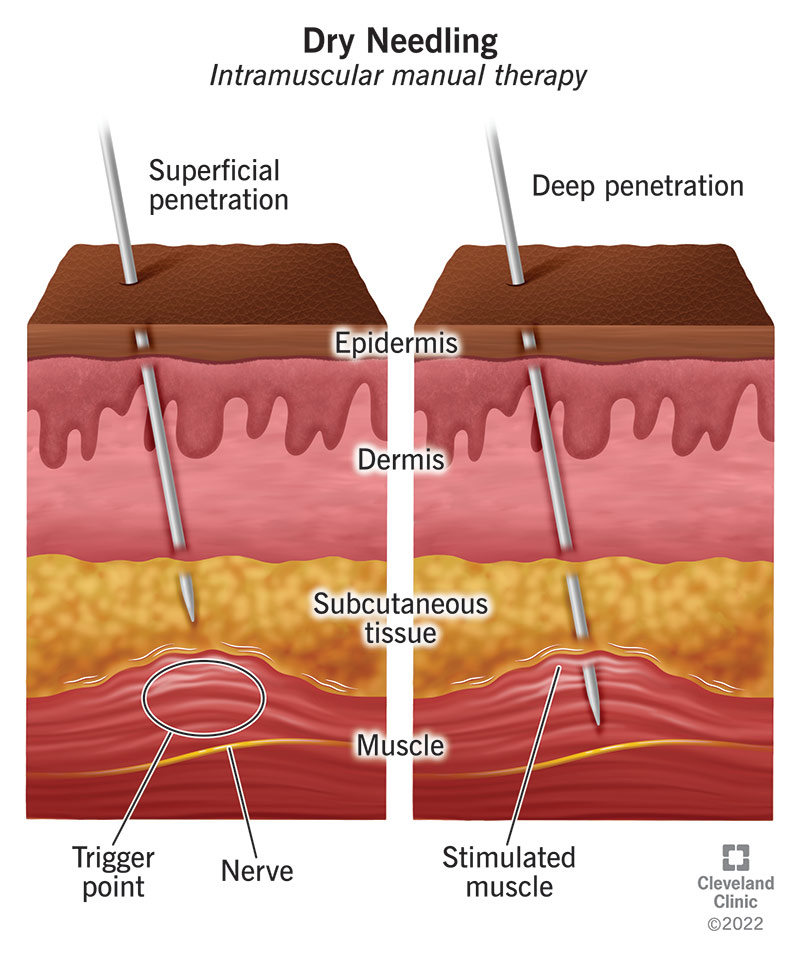Reflections on Health Challenges and Treatment Innovations
Modern healthcare is a vast and ever-evolving landscape where modern medicine and alternative practices often intersect. Observing the journey from HIV research and treatment to complementary therapies like acupuncture truly paints a picture full of tangled issues and tricky parts in today’s health care environment. In this editorial, we take a closer look at the many facets that make our understanding of diseases, risk factors, and treatment options both fascinating and, at times, intimidating.
Examining the Rapid Development of COVID-19 Vaccines vs. Slower Advances in HIV and Cancer Treatments
One of the most thought-provoking comparisons in recent years is the rapid development of COVID-19 vaccines compared with the more sluggish progress in finding cures for HIV and cancer. This contrast brings to light many confusing bits in research prioritization and funding. While COVID-19 mobilized swift action and resources on a global scale, HIV and cancer research continue to be riddled with challenges that require innovative solutions.
Key reasons for the rapid COVID-19 vaccine development include:
- Massive global collaboration and funding
- Streamlined regulatory processes
- Focused urgency due to a rapidly spreading virus
- Cutting-edge biotechnologies that built on decades of prior research
On the other hand, HIV and cancer pose their own set of nerve-racking, complicated pieces. For HIV, the virus’s ability to mutate, combined with societal stigma, has made vaccine development an ongoing challenge. Moreover, the hidden complexities of cancer, which presents in many different forms, make it challenging to find a one-size-fits-all cure. Thus, the twists and turns in these fields underscore the need for both increased funding and new research models that can get around these tangled issues.
Acupuncture for Managing Chronic Pain: Digging Into Alternative Therapies
The health community has increasingly looked toward complementary and alternative therapies—such as acupuncture—to manage chronic pain. Recent polls have revealed that a significant proportion of people have tried acupuncture, with about 71% saying yes, 29% no, and a minimal portion feeling unsure. This interesting data point highlights the weight many patients place on traditional approaches to complement their standard treatments.
Acupuncture has garnered attention because it offers a different approach to pain management for conditions like migraines, back pain, and even some musculoskeletal issues. The idea behind acupuncture is that stimulating specific body points can help balance energy flow—a delicate balance that can ease pain and relieve tension.
When discussing acupuncture, it’s helpful to consider:
- Patient Experiences: Many individuals report a shift in well-being after acupuncture treatments.
- Scientific Research: Studies have indicated that acupuncture can reduce inflammation and boost blood flow.
- Integration with Modern Medicine: Combining alternative therapies with modern strategies creates a holistic approach.
This combination of alternative and modern medicines highlights how health management is not simply black and white. Instead, it forces us to figure a path through a maze of options—each with its own small distinctions and subtle details. Even though modern medicine continues to strive for groundbreaking discoveries in HIV and cancer, alternative methods like acupuncture shine as super important complements in the health continuum.
Understanding HIV Prevention and Testing: Getting into the Realities
HIV prevention and testing are two critical areas in the fight against the virus and are key components of improving overall public health. Efforts such as regular testing, education on safe practices, and pre-exposure prophylaxis (PrEP) have significantly reduced new cases and improved quality of life for millions of individuals worldwide. However, many of these efforts are still met with confusing bits and nerve-racking challenges.
There are several issues in the field of HIV prevention and testing that need attention:
- Stigma and Social Barriers: The lingering stigma surrounding HIV can lead to delayed testing and treatment.
- Access to Healthcare: Resource allocation across different regions often leaves some communities underserved.
- Risk Communication: Conveying the fine points of risk assessment is both tricky and essential for effective prevention campaigns.
Each of these points represents a small twist in the broader battle against HIV. It is critical that healthcare professionals continue to work through these difficult areas and make it easier for individuals to find their way through the maze of confusing bits when it comes to prevention and testing. They must provide clear, neutral guidance to help patients understand their options and make informed choices.
The Role of Comprehensive Sexual Health Education in Disease Prevention
A comprehensive approach to sexual health education is a must-have cornerstone for preventive care. When individuals have access to accurate, clear, and accessible information, they are better equipped to manage their health. This not only limits the spread of diseases like HIV but fosters a healthier, more informed society.
Some critical elements of effective sexual health education include:
- Clear explanations of how diseases are transmitted
- Practical advice on testing and prevention
- Reliable information regarding modern treatment options
- Discussions around alternative therapies that might support conventional treatment
Education in this area can be challenging when addressing tangled issues—especially in communities where outdated or off-putting myths persist. By taking a closer look at the fine points and ensuring multiple voices are heard—from both modern health experts and practitioners of alternative medicine—we can begin to steer through these issues and craft a more inclusive outreach strategy.
Modern Medicine Versus Complementary Approaches: Striking a Balanced Healthcare Path
Modern medicine has brought about tremendous progress in the treatment of HIV and other chronic conditions. Antiretroviral therapies have transformed HIV from what once was a fatal diagnosis into a manageable chronic condition. However, these treatments are only one piece of a larger puzzle.
Many patients today are not satisfied with relying solely on prescription drugs and clinic appointments. They are increasingly interested in complementary approaches that work alongside standard treatments. Complementary therapies, including nutrition modifications, stress-relieving practices, and acupuncture, help manage the nerve-racking, complicated pieces of living with a chronic condition.
This balanced approach has several benefits:
- Holistic Management: By combining proven modern medications with alternative therapies, patients can address both physical symptoms and overall well-being.
- Enhanced Quality of Life: Practices like meditation, balanced nutrition, and acupuncture contribute to better mental health and reduce overall discomfort.
- Tailored Treatment Plans: Every individual is unique. Working together with healthcare providers to craft a customized plan ensures that treatment is aligned with personal needs and lifestyle choices.
While some may view the inclusion of alternative therapies as off-putting in the traditional healthcare model, many patients find that these methods—when used responsibly—offer a crucial supplement to their established treatment regimes. The blending of these approaches represents a critical evolution in health care, one that keeps patient-centered care at its core.
Addressing the Stigma: Working Through Societal Challenges in HIV Care
The stigma surrounding HIV is a long-standing barrier that continues to impact patient outcomes and overall public health initiatives. Despite significant advances in treatment and prevention, many people still face misunderstanding and discrimination. This societal stigma can contribute to delays in diagnosis and treatment, and it can make finding your way through life with a chronic condition even more challenging.
To mitigate the effects of stigma, important steps need to be taken:
- Open Communication: Encouraging dialogue between healthcare providers and patients can help dispel myths and correct misinformation.
- Community Engagement: Initiatives that involve community support networks, online forums, and educational outreach are essential.
- Representation in Media: Prominent figures and real-life stories of successful HIV management—such as those shared by well-known personalities—help change public perceptions.
The journey toward erasing stigma is certainly filled with confusing bits and nerve-racking challenges. However, by focusing on clear communication and mutual respect, society as a whole can embark on a journey to manage its way through these twisted issues, transforming a tense and intimidating topic into a conversation that holds hope and progress.
Exploring the Intersection of Nutrition and HIV Treatment
Nutrition plays a super important role in the overall well-being of everyone, including those managing HIV. A balanced diet not only supports the immune system but also improves the body’s ability to cope with the side effects of antiretroviral therapies. The marriage of proper nutrition and medical treatments can lead to improved health outcomes and a better quality of life for patients.
Consider the following nutritional strategies:
- Anti-inflammatory Foods: Emphasizing fruits, vegetables, and whole grains can reduce inflammation and boost overall health.
- Balanced Macronutrients: Ensuring the intake of essential proteins, fats, and carbohydrates helps maintain energy levels throughout the day.
- Supplementation: In some cases, vitamins and minerals might be necessary to cover dietary gaps and support the immune system.
This topic is full of little twists and small distinctions that need to be addressed on a personalized basis. Patients are encouraged to work closely with a nutritionist—preferably one who understands the subtle parts of HIV and its associated treatments—in order to figure a path toward optimum health.
Integrating Mindfulness and Mental Health in the Management of Chronic Conditions
The mental health of a patient is closely tied to the physical management of chronic diseases, including HIV and chronic pain conditions. When navigating the challenging bits that come with a serious diagnosis, stress management and mindfulness techniques can prove to be therapeutic components of a comprehensive treatment plan.
Mindfulness practices such as meditation, yoga, or even mindfulness-based stress reduction (MBSR) programs can help patients find their path through stressful times. These approaches assist in:
- Reducing feelings of overwhelming concern
- Improving sleep quality
- Enhancing overall emotional well-being
- Strengthening the mind-body connection
The integration of mindfulness into treatment plans is not about replacing standard care but rather about complementing it. By taking a closer look at the fine details—the subtle parts of stress management routines—patients can work through the challenging bits more effectively, ensuring a more rounded approach to health management.
Charting a Path Forward: Future Directions in Healthcare Innovation
Looking toward the future, it is clear that healthcare is destined to become even more integrated. The convergence of modern medicine with complementary treatments offers a framework that can potentially address many of the confusing bits and nerve-racking challenges we currently face. Emerging technologies, personalized medicine, and a broader acceptance of alternative therapies will all play significant roles in shaping the future of health care.
Some key areas to watch include:
| Area of Innovation | Description |
|---|---|
| Personalized Medicine | Customized treatment approaches tailored to an individual’s genetic makeup and lifestyle. |
| Digital Health Solutions | Telemedicine, wearable technology, and digital platforms that facilitate remote care and better patient monitoring. |
| Integrative Therapies | Combining conventional treatments with complementary approaches such as acupuncture, nutrition, and mindfulness. |
| Community Health Initiatives | Programs aimed at reducing stigma and improving education and access to care, particularly in underserved communities. |
These areas are not without their own set of tricky parts and tangled issues. However, by working together, researchers, clinicians, and community advocates can find their way through these challenges to create a more effective and inclusive health care system. The goal is to ensure that each person benefits from a comprehensive approach that addresses both the physical and emotional needs inherent in chronic disease management.
Community Engagement and the Role of Online Health Platforms
Online communities and health platforms like POZ have become key players in how individuals access information and support. The availability of blogs, personal stories, and expert panels allows patients to work through complicated pieces of information and make more informed decisions about their health care. These platforms also serve as valuable tools to help reduce the social stigma attached to diseases such as HIV, by providing a safe space where experiences can be shared without judgment.
Some benefits of online health communities include:
- Peer Support: Connecting with others who share similar experiences can help alleviate feelings of isolation.
- Accessible Information: Blogs and expert panels often translate nerve-racking scientific data into simpler, relatable language.
- Real-Time Updates: Platforms can quickly disseminate important information regarding new treatments, research breakthroughs, and health tips.
These digital spaces offer an essential service in today’s health care. They bridge the gap between medical professionals and patients, ensuring that even the little details and subtle parts of treatment options are explained clearly. In doing so, they help individuals sort out the miscommunications that can arise from traditional health care conversations.
Integrating Patient Stories: Learning from Lived Experiences
Nothing illustrates the reality of the healthcare journey better than personal stories. In communities dealing with HIV and other chronic conditions, the narratives of those who have been through the system add texture to the broader discussion of treatment and care. These stories allow us to dig into the real-life impacts of modern and alternative healthcare approaches, making abstract issues more tangible and relatable.
Notable points from patient narratives include:
- Overcoming Initial Fears: Many recount the intimidating nature of receiving a diagnosis and how supportive care helped them manage that initial shock.
- Integrating Complementary Approaches: Patients often discuss how lifestyle adjustments, including nutrition and mindfulness, have improved their daily lives.
- Community and Connection: The ability to share experiences creates an empowering network that fosters resilience and hope.
These shared narratives not only demystify complicated pieces of the healthcare journey but also inspire improvements in the way care is delivered. They remind us that behind every statistic or medical term, there is a human being whose life is deeply impacted by each decision and every advancement in treatment.
Bridging Knowledge Gaps: The Importance of Clear, Accessible Health Information
One of the biggest challenges facing modern healthcare is the gap between cutting-edge research and what is actually accessible to the average person. Despite advances in digital health and the proliferation of online resources, many individuals still struggle to understand the fine shades of complicated medical topics.
To bridge this gap, several strategies can be employed:
- Simplified Communication: Health professionals must work to translate the nitty-gritty details of research into language that is easily understood.
- Visual Aids: Diagrams, tables, and infographics can be incredibly effective in clarifying small distinctions that might otherwise seem overwhelming.
- Interactive Formats: Webinars, Q&A sessions, and community forums encourage engagement and ensure that fine points aren’t lost in translation.
By focusing on clear, jargon-free communication, both the modern and alternative healthcare communities can empower individuals to take active roles in their treatment. This collaboration not only improves outcomes but ensures that everyone finds their way through even the nerve-racking bits that can otherwise discourage engagement with the healthcare system.
Working Toward a Future of Integrated, Patient-Centered Care
Ultimately, the future of healthcare lies in integration and collaboration. By combining the best of modern medicine with complementary strategies—including nutrition, mindfulness, and alternative therapies like acupuncture—we have the potential to build a much stronger and more patient-centered care model. Achieving this will require health professionals to work through tangled issues and be open to new ideas, all while putting the needs and experiences of patients first.
Key pillars for the future include:
- Personalized Care: Customizing treatment plans that consider both the physical and emotional needs of patients.
- Interdisciplinary Collaboration: Bringing together experts in various fields—from traditional medicine to complementary therapies—to create holistic care strategies.
- Ongoing Research: Investing in studies that explore both modern and alternative treatments can lead to breakthroughs that address even the most intimidating health challenges.
- Patient Empowerment: Ensuring that patients are active participants in their care by providing them with the tools and knowledge they need to manage their conditions.
This integrated approach is not without its twists and turns, and it requires constant collaboration among researchers, clinicians, and community advocates. However, when everyone works together, the resulting synergy can pave the way for a future where healthcare is as compassionate as it is innovative.
Conclusion: Embracing a Multifaceted Approach to Health and Wellness
As we reflect on the many challenges and opportunities facing modern healthcare, it becomes evident that our path forward lies in embracing a multifaceted approach. Whether we are comparing the rapid pace of COVID-19 vaccine development with the more tangled issues surrounding HIV and cancer, or exploring the potential benefits of acupuncture as a complementary therapy, one truth stands out: progress is made when we work together.
By examining the real-life stories of patients, understanding the importance of comprehensive sexual health education, and integrating mindfulness and nutrition into everyday care, we can overcome the intimidating challenges that arise in the realm of chronic condition management. While the journey is filled with complicated pieces and confusing bits, every step taken toward clearer communication and integrated care brings us closer to a more inclusive and accessible healthcare system.
The road ahead may be full of twists and turns, and it may sometimes feel overwhelming or off-putting. However, each advancement—no matter how small—adds up to a significant shift in how we approach health and wellness. Together, we can build a system that not only treats disease but also honors the story of every individual who walks through its doors, ensuring a future where every patient finds a path that leads to safety, understanding, and improved quality of life.
Originally Post From https://www.poz.com/poll/ever-tried-acupuncture
Read more about this topic at
Empowering Voices
PrEParados: Empowering Voices for Black HIV Awareness


